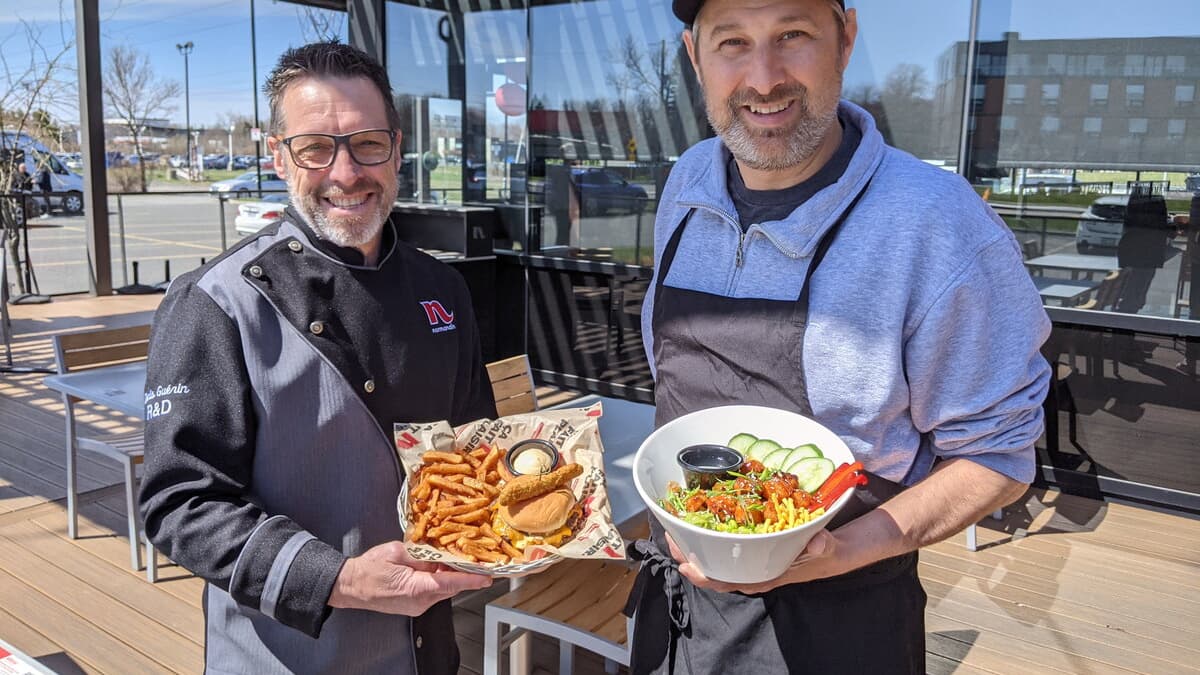The evenings of December 31, which are generally an opportunity to gather with family or friends to welcome the New Year at midnight, also have their own culinary traditions that vary from country to country. To inspire you for the upcoming New Year's Eve, or simply to whet your appetite, here is a selection of typical dishes for you to discover.
Bulgaria — Banitsa, one of the most symbolic dishes in Bulgarian cuisine, is also prepared as part of the rituals for December 31st. It is a pastry made from filo dough, usually filled with yogurt or cheese. They can be sweet or savory, but most banitza are made with feta cheese and eggs.
“On New Year’s Eve, we prepare banitsa and insert papers on which we write our wishes for the coming year,” explains Radostina Raisheva, a teacher from Montreal who was born in Bulgaria. Dogwood branches with buds are also “planted” there, and these buds symbolize what the new year will bring. We attach short sentences with wishes to them. The main desires relate to health, luck, love and wealth. »
Haiti Jomo soup, which is prepared in Haiti for New Year's, has a prominent political history. You should know that 1any January is also Haiti's Independence Day. This soup, made with giraumon (a type of squash), beef, potatoes, vegetables and spices, was once served only to French slave masters on plantations.
However, 1any In January 1804, joumou soup was allowed to be consumed by everyone, to symbolize the country's independence and mock colonial France. Since December 2021, it has been part of the Intangible Cultural Heritage of Humanity of UNESCO.
Mexico – Mexico has its own king cake, Rosca de Reyes. “It's actually similar to a galette and a French king cake,” explains Gabriel Saul, a Montreal musician whose family lives between Mexico and Canada. And whoever eats his share Ruska Whoever finds the little ceramic Jesus that slipped inside gets to throw a tamale party and invite everyone who ate it with him. »
“It has become a joke among Mexicans: no one wants to have a party and cook tamales for twenty people. So we often hear people say: ‘I swallowed Jesus because I didn’t want to cook it.’ It is really a tradition done with family or friends, with a large group, Because then you have to organize a tamales dinner.”
Tunisia — In Tunisia, couscous is especially popular around New Year's, whether on December 31 or in the summer (variable date), because Hijri New Year, The first day of the Hijri year. Couscous with dried meat (kadid) and fish is the most common.
“Fish couscous is a typical Tunisian dish,” says Sanaa Matboui, a Tunisian-born computer scientist at Laval. The majority of our large cities are located on the Mediterranean coast. Therefore, fish is very important in our culinary traditions. We are also the only country in the Maghreb that makes red (spicy) couscous. Tunisia is also famous for its macaroni salsa, a spicy pasta recipe. In my father's Berber (Berber) family, we eat it with beef, and in my mother's family, with fish. »
Japan – The Japanese celebrate the transition into the new year with toshikoshi soba, a bowl of buckwheat noodles, on Omisuka (New Year's Eve). Toshikoshi literally means “the end of the year,” and eating soba on New Year’s Eve is said to start the year with good luck.
Soba's origins go back to the Edo period (1603-1867). It is consumed throughout the country on December 31. Since buckwheat can withstand harsh winters, soba is also said to symbolize strength and resilience.
Quebec – For better or worse, our roundup of holiday culinary traditions wouldn't be complete without mentioning sandwich bread and Quebec meat. We are also dedicatedLast year's article about these unloved dishesWhich is beginning to gain popularity, especially among young people.
“My parents are originally from Saguenay and have lived in western Montreal for about thirty years,” says Olivier Maltese, a cultural worker in Montreal. Sandwich bread is a tradition in our house, but my mother pointed out to me that my uncle doesn't make it at home. She told me she did it, in part, to remember her childhood in Saguenay. My grandmother made it for New Year's Eve when my parents were young. We do it once a year, because it's good, but it's also a lot of work, so it's best to do it in the context of sharing and celebrating. »
To watch on video

“Total coffee aficionado. Travel buff. Music ninja. Bacon nerd. Beeraholic.”







More Stories
House of Representatives | An elected official in Texas is accused of bribery and money laundering
RADIO SILENCE: Couple of octogenarians still abandoned by Norwegian cruise line
Ballot boxes follow each other but are not the same (duplicate)